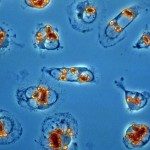Link to Pubmed [PMID] – 31006600
Link to DOI – S1471-4922(19)30055-810.1016/j.pt.2019.03.004
Trends Parasitol 2019 06; 35(6): 409-422
CRISPR/Cas9 technology has been developing rapidly in the field of parasitology, allowing for the dissection of molecular processes with unprecedented efficiency. Optimization and implementation of a new technology like CRISPR, especially in nonmodel organisms, requires communication and collaboration throughout the field. Recently, a ‘CRISPR in Parasitology’ symposium was held at the Institut Pasteur Paris, bringing together scientists studying Leishmania, Plasmodium, Trypanosoma, and Anopheles. Here we share technological advances and challenges in using CRISPR/Cas9 in the parasite and vector systems that were discussed. As CRISPR/Cas9 continues to be applied to diverse parasite systems, the community should now focus on improvement and standardization of the technique as well as expanding the CRISPR toolkit to include Cas9 alternatives/derivatives for more advanced applications like genome-wide functional screens.





